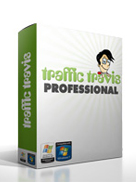The most challenging part of writing posts on my weblog childhoodspeech is still without a doubt, understanding wordpress. For the first 3 months, I literally struggled to understand html. There was an occassion when I actually had to contact the theme designer to help me. It was a very frustrating day for me then.
I happen to be a person who loves working with layout and design (a bit like moving furniture around house!). Without previous experience with website design, I had to take it one day at a time until I am now finally confident to make some adjustments with the layout. I mean, blogging is essentially a very private affair, like jogging. It is always good to learn the basics on your own.
Here are some pointers which I hope will benefit you on getting organised:
1. Do not choose black colour as background. It is a fact that when black background is used for children, they have more difficulty retaining the knowledge of the images and text they see. The rule applies to adults as well.
2. I love to write and therefore working on a theme with 3 columns is better for me. It allows me more freedom to add more information.
3. The post area is the work area. This is the most important part for me, so learn all the rules associated to that work area. The way to know how much you need to understand is by staring at a blank page before you create.
Print it out using printscreen. Then circle each area you know or think you need help with. As you build your website, take time to learn from other bloggers who have written about it by making a search for the correct topic you want.
For instance, I had a problem with a simple html command to wrap text on my images on my wordpress. It did take me an entire day before I found a site which actually explains to me in plain terms that I can understand. I learn from this experience that it is not always the top ranking sites that can provide the best answer. In this case, it is Preblogging.com.
4. Always save your lessons or html codes on your desktop notepad and file them accordingly. Give the filename exactly for the type of layout that html code represents. So if it is myBloglog, use 'myBloglog.htm' and so on. This is for you easy reference next time.
I find that over a period of time, I was learning tha pattern in the html codes and what they represent. I update them regularly to make sure I do not have duplicates as this will confuse me later. And if I don't need them at all, I just chuck it (delete). Now I have the ones that I regularly use.
As soon as I learn something new, I update my notepad. I do not wait till the next day.
6. I strongly recommend not to follow tutorials based on the popularity of the sites, because every post has a unique message and may require very different html codes. I search on a need basis.
I leave a comment to say thank you once I have taken a tip from the owner; if I do not feel I should enter my comment, I do search on his site as part of my contributions to their earnings before I leave. Ohter bloggers work hard just like me, I do not have to fork out a cent to just search on their pages; they did all the work, I do my part as an internet user.
7. Widgets are blogger's best friend. I love widgets. I mean whoever came up with this name should earn the noble prize. Just copy and paste. Ahh! You can upgrade yourself to become widget pro, because they are basically html commands. If you are truly afraid of making mistakes on your work (post) area, use the widgets as a way to learn html commands. Widgets essentially remain on the widget box, so mistakes you make will not affect the layout of your posts.
Tuesday, July 15, 2008
Subscribe to:
Post Comments (Atom)








No comments:
Post a Comment